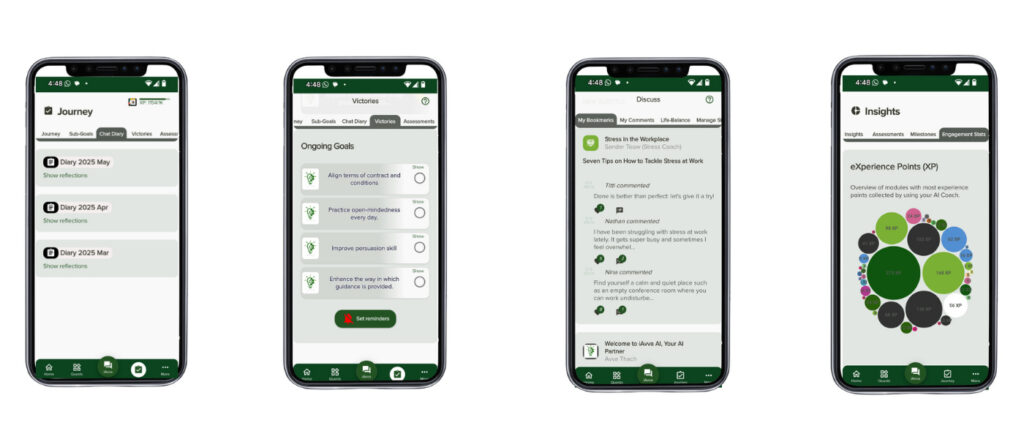The healthcare revenue cycle is a complex and multifaceted process that encompasses all the administrative and clinical functions that contribute to the capture, management, and collection of patient service revenue. It begins with patient registration and extends through the final payment of a balance owed by the patient or their insurance provider. Understanding this cycle is crucial for healthcare organizations aiming to optimize their financial performance and ensure sustainability in an increasingly competitive landscape.
The revenue cycle is not merely a back-office function; it is integral to the overall health of the organization, influencing cash flow, operational efficiency, and patient satisfaction. At its core, the revenue cycle involves several key components, including patient registration, eligibility verification, coding, billing, and collections. Each of these elements must work in harmony to ensure that healthcare providers are compensated for their services.
Disruptions or inefficiencies in any part of this cycle can lead to significant financial losses, making it imperative for organizations to have a comprehensive understanding of how each component interacts with the others. By recognizing the importance of a well-functioning revenue cycle, healthcare leaders can implement strategies that enhance operational efficiency and improve financial outcomes.
Key Takeaways
- Efficient patient registration and eligibility verification are crucial for reducing claim denials.
- Accurate coding and thorough documentation directly impact reimbursement rates.
- Leveraging technology and data analytics enhances revenue cycle performance and monitoring.
- Continuous staff training ensures compliance and improves revenue cycle processes.
- Outsourcing revenue cycle management can optimize collections and reduce administrative burdens.
Streamlining Patient Registration and Eligibility Verification
The first step in the revenue cycle is patient registration, which sets the stage for all subsequent processes. Streamlining this phase is essential for reducing wait times and improving patient satisfaction. An efficient registration process not only enhances the patient experience but also minimizes errors that can lead to claim denials later on.
Implementing user-friendly online registration forms and ensuring that staff are well-trained in data entry can significantly reduce the time spent on this initial step. Eligibility verification is another critical aspect of patient registration. It involves confirming a patient’s insurance coverage and benefits before services are rendered.
This step is vital for preventing claim denials due to lack of coverage or incorrect information. By utilizing automated eligibility verification tools, healthcare organizations can quickly ascertain a patient’s insurance status, allowing them to address any issues proactively.
Enhancing Coding and Documentation Accuracy

Accurate coding and documentation are pivotal in ensuring that healthcare providers receive appropriate reimbursement for their services. Coding errors can lead to claim denials or underpayments, resulting in lost revenue and increased administrative costs. To enhance accuracy, organizations must invest in ongoing training for coding staff and implement robust auditing processes to identify and rectify errors before claims are submitted.
Moreover, clear and comprehensive documentation is essential for supporting the codes assigned to patient encounters. Healthcare providers must ensure that their clinical notes accurately reflect the services provided and the medical necessity of those services. By fostering a culture of thorough documentation among clinicians, organizations can improve coding accuracy and reduce the likelihood of audits or denials from payers.
This proactive approach not only safeguards revenue but also enhances compliance with regulatory requirements.
Improving Claims Submission and Denial Management
Once coding is complete, the next step in the revenue cycle is claims submission. Timely and accurate submission of claims is crucial for maintaining cash flow and minimizing delays in payment. Organizations should adopt electronic claims submission processes to streamline this phase, reducing the risk of human error and expediting payment cycles.
Additionally, implementing a claims tracking system can help organizations monitor the status of submitted claims and identify any issues that may arise. Denial management is equally important in the revenue cycle process. When claims are denied, it can create significant financial strain on healthcare organizations.
A systematic approach to denial management involves analyzing denial trends, identifying root causes, and implementing corrective actions to prevent future occurrences. By establishing a dedicated team to handle denials and appeals, organizations can improve their recovery rates and ensure that they are compensated for the services rendered.
Maximizing Insurance Follow-Up and Collections
| Metric | Description | Typical Value/Range | Importance |
|---|---|---|---|
| Clean Claim Rate | Percentage of claims submitted without errors | 85% – 98% | High – Reduces denials and speeds up payment |
| Days in Accounts Receivable (AR) | Average number of days to collect payments | 30 – 45 days | High – Indicates efficiency of collections |
| Denial Rate | Percentage of claims denied by payers | 5% – 15% | High – Identifies issues in billing or documentation |
| First Pass Resolution Rate | Percentage of claims paid after first submission | 70% – 90% | High – Reflects accuracy and efficiency |
| Net Collection Rate | Percentage of total collectible amount actually collected | 90% – 98% | High – Measures overall revenue cycle effectiveness |
| Cost to Collect | Average cost incurred to collect payments | 1% – 3% of total revenue | Medium – Helps optimize operational expenses |
| Patient Payment Collection Rate | Percentage of patient-responsible balances collected | 60% – 80% | Medium – Important for cash flow and patient satisfaction |
Effective follow-up on insurance claims is essential for maximizing revenue collection. After claims are submitted, organizations must have a clear strategy for tracking payments and following up on outstanding balances. This includes regularly reviewing accounts receivable reports to identify overdue claims and proactively reaching out to payers for updates on claim status.
In addition to follow-up on insurance claims, healthcare organizations must also focus on collections from patients. With rising deductibles and out-of-pocket expenses, patients are increasingly responsible for a larger portion of their healthcare costs. Implementing flexible payment plans and offering various payment options can help facilitate collections while maintaining positive patient relationships.
By prioritizing both insurance follow-up and patient collections, organizations can significantly improve their overall revenue cycle performance.
Implementing Effective Patient Payment Solutions

As patients take on more financial responsibility for their healthcare costs, it is essential for organizations to implement effective payment solutions that cater to their needs. Offering multiple payment options—such as online payments, mobile apps, and automated phone systems—can enhance convenience for patients while streamlining collections for providers. Additionally, providing clear information about payment policies and financial assistance options can help alleviate confusion and foster trust between patients and healthcare organizations.
Moreover, organizations should consider implementing point-of-service collections at the time of service delivery. This proactive approach allows providers to collect co-pays or deductibles upfront, reducing the likelihood of outstanding balances later on. By integrating payment solutions into the patient experience seamlessly, healthcare organizations can improve cash flow while enhancing patient satisfaction.
Leveraging Technology for Revenue Cycle Management
Technology plays a pivotal role in optimizing revenue cycle management (RCM) processes. By leveraging advanced software solutions, healthcare organizations can automate various aspects of the revenue cycle, from patient registration to claims submission and follow-up. Automation reduces manual errors, increases efficiency, and allows staff to focus on higher-value tasks rather than repetitive administrative work.
Additionally, implementing integrated RCM systems can provide real-time visibility into financial performance metrics, enabling organizations to make data-driven decisions. These systems can track key performance indicators (KPIs) such as days in accounts receivable, claim denial rates, and collection rates, allowing leaders to identify areas for improvement quickly. By embracing technology as a strategic asset in RCM, healthcare organizations can enhance operational efficiency and drive better financial outcomes.
Utilizing Data Analytics for Performance Monitoring
Data analytics is an invaluable tool for monitoring revenue cycle performance and identifying trends that may impact financial health. By analyzing historical data on claims submissions, denials, collections, and patient demographics, organizations can gain insights into their revenue cycle processes’ effectiveness. This information can inform strategic decisions aimed at optimizing operations and improving cash flow.
Furthermore, predictive analytics can help organizations anticipate future trends in patient volume or payer behavior, allowing them to proactively adjust their strategies accordingly. For example, if data indicates an increase in high-deductible health plans among patients, organizations may choose to enhance their patient education efforts regarding financial responsibilities or implement more robust payment solutions. By leveraging data analytics effectively, healthcare organizations can stay ahead of potential challenges and capitalize on opportunities for growth.
Enhancing Compliance and Regulatory Adherence
Compliance with regulatory requirements is a critical aspect of revenue cycle management that cannot be overlooked. Healthcare organizations must navigate a complex landscape of regulations governing billing practices, coding standards, and patient privacy laws. Failure to adhere to these regulations can result in significant financial penalties and damage to an organization’s reputation.
To enhance compliance efforts, organizations should establish clear policies and procedures related to billing practices and coding accuracy. Regular training sessions for staff on regulatory updates are essential to ensure everyone remains informed about changes that may impact their roles. Additionally, conducting routine audits of billing practices can help identify potential compliance issues before they escalate into larger problems.
By prioritizing compliance within the revenue cycle framework, healthcare organizations can mitigate risks while fostering trust with patients and payers alike.
Training and Education for Revenue Cycle Staff
Investing in training and education for revenue cycle staff is crucial for ensuring that they possess the skills necessary to navigate an increasingly complex landscape effectively. Continuous education programs should be implemented to keep staff updated on industry best practices, regulatory changes, and emerging technologies that impact revenue cycle management. Moreover, fostering a culture of collaboration among revenue cycle teams can enhance communication and streamline processes across departments.
Regular team meetings focused on sharing insights and addressing challenges can promote a sense of ownership among staff members while driving improvements in overall performance. By prioritizing training and education initiatives within the revenue cycle framework, healthcare organizations can empower their teams to excel in their roles while contributing positively to financial outcomes.
Outsourcing Revenue Cycle Management Services
Outsourcing revenue cycle management services has become an increasingly popular strategy among healthcare organizations seeking to optimize their operations while reducing costs. By partnering with specialized RCM firms, organizations can leverage expertise in billing practices, coding accuracy, and compliance adherence without incurring the overhead associated with maintaining an in-house team. Outsourcing also allows healthcare providers to focus on their core competencies—delivering high-quality patient care—while leaving administrative tasks to experts who specialize in revenue cycle management.
This strategic partnership can lead to improved cash flow, reduced claim denials, and enhanced overall efficiency within the revenue cycle process. As healthcare continues to evolve rapidly, outsourcing RCM services may prove essential for organizations looking to remain competitive while maximizing their financial performance. In conclusion, optimizing the healthcare revenue cycle requires a multifaceted approach that encompasses various strategies aimed at enhancing efficiency and ensuring compliance.
By streamlining processes from patient registration through collections while leveraging technology and data analytics effectively, healthcare organizations can significantly improve their financial health while delivering exceptional care to patients. Investing in training initiatives for staff members further strengthens these efforts by equipping them with the knowledge necessary to navigate an ever-changing landscape successfully. Ultimately, embracing these strategies will position healthcare providers for long-term success in an increasingly competitive environment.
In the ever-evolving landscape of healthcare revenue cycle management (RCM), understanding the implications of digital transformation is crucial for organizations aiming to enhance their operational efficiency. A related article that delves into this topic is titled “Digital Transformation Consulting Roadmap,” which outlines strategic approaches for healthcare providers to navigate the complexities of digital change.




















Leave a Reply